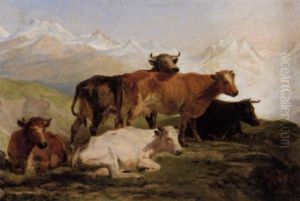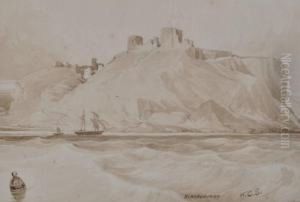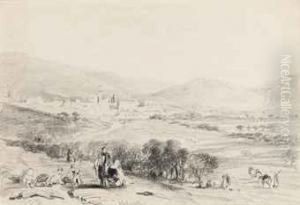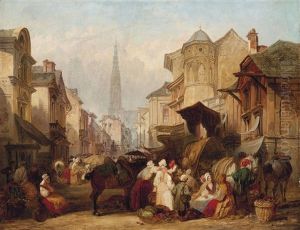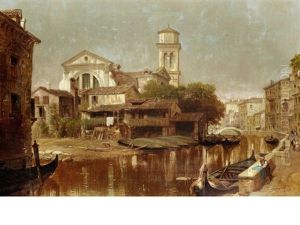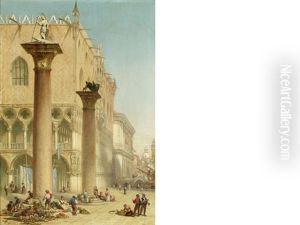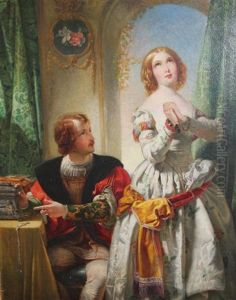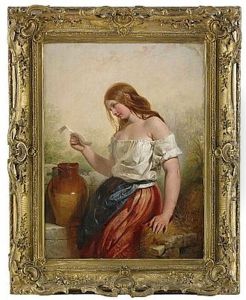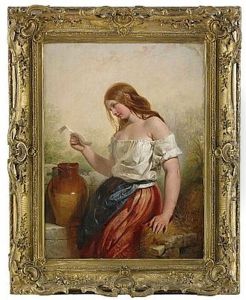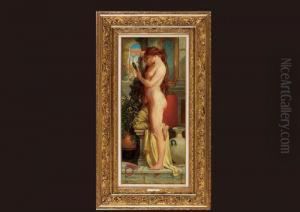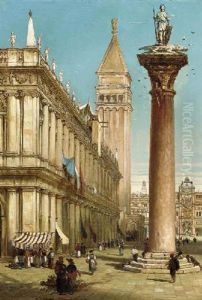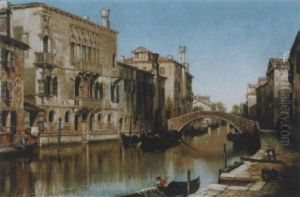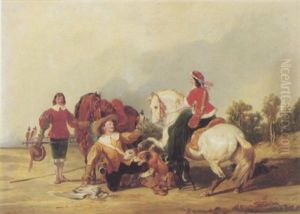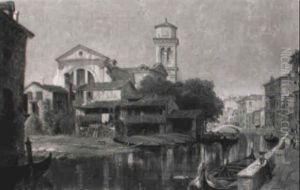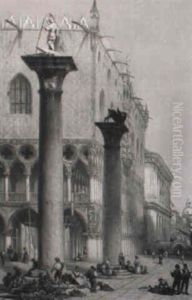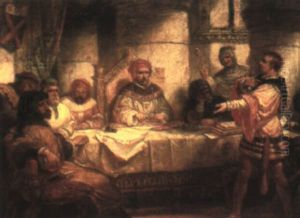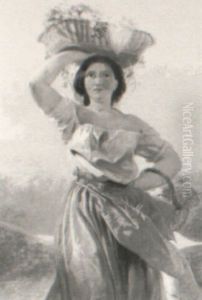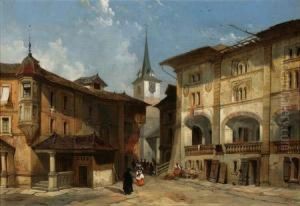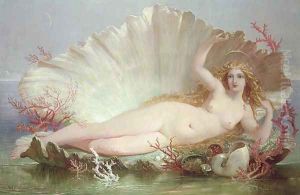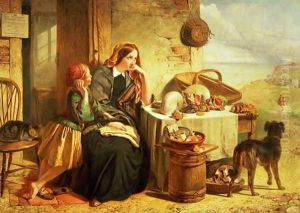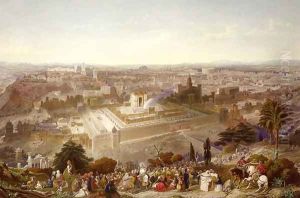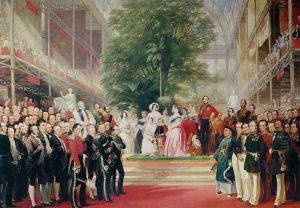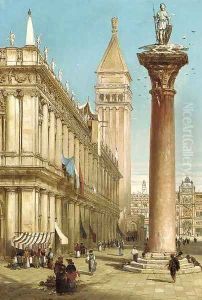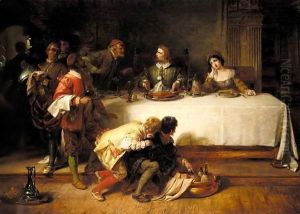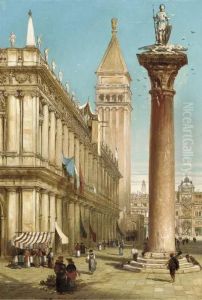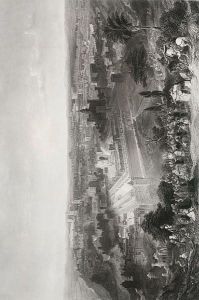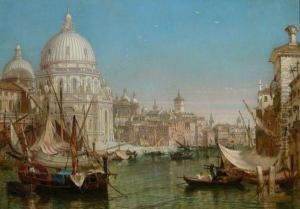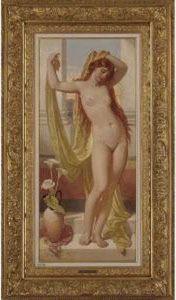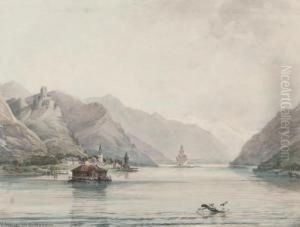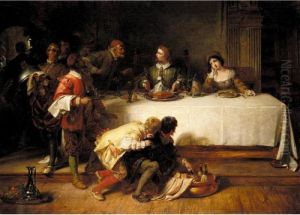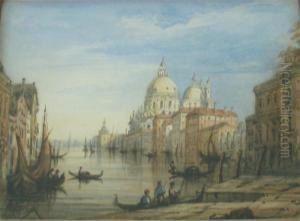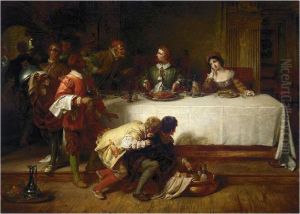Henry Courtney Selous Paintings
Henry Courtney Selous was an English painter, illustrator, and lithographer known for his historical and genre scenes. Born on September 19, 1803, in London, Selous showed an early interest in the arts and was encouraged by his family. He initially studied under the tutelage of his father, who was a well-respected drawing master and later attended the Royal Academy Schools where he honed his artistic skills.
Selous was a versatile artist, and his works include historical scenes, landscapes, and literary illustrations. He was particularly recognized for his attention to detail and his ability to evoke emotion through his historical paintings. One of his most notable works is 'The Opening of The Great Exhibition' (1851), which captures the grandeur and excitement of the event hosted by Queen Victoria and Prince Albert.
Throughout his career, Selous exhibited extensively at the Royal Academy and the British Institution. His illustrations were also sought after and he contributed to the visual interpretation of works by authors such as Dante Alighieri and John Milton, enhancing the way Victorian audiences experienced literature.
In addition to painting and illustrating, Selous was involved in the early developments of the chromolithography process, a method for making multi-color prints. This allowed for the wider dissemination of his and other artists' works to the public, making art more accessible to the masses during the 19th century.
Henry Courtney Selous' dedication to his craft and his impact on Victorian art and illustration remained significant throughout his life. He passed away on March 24, 1890. His works continue to be appreciated for their historical value and artistic merit.
